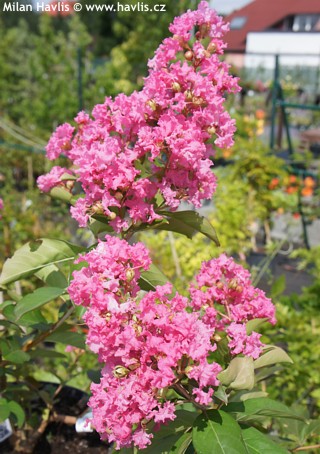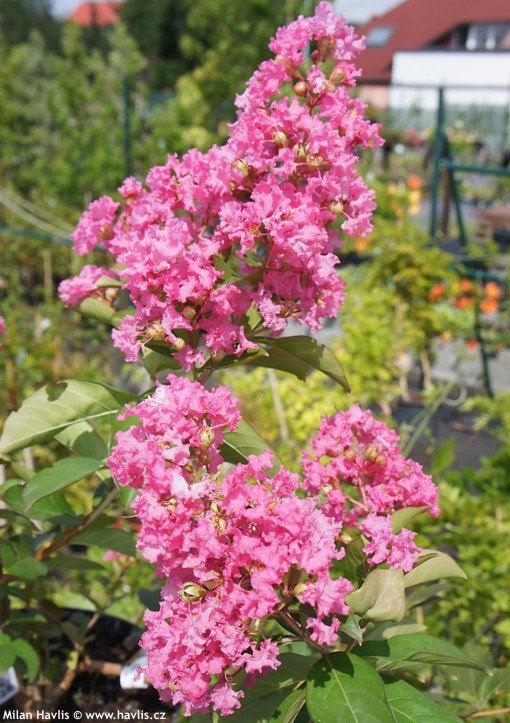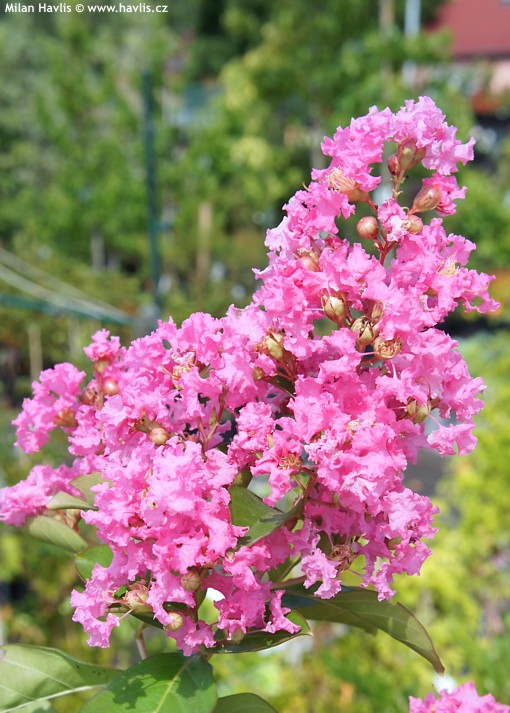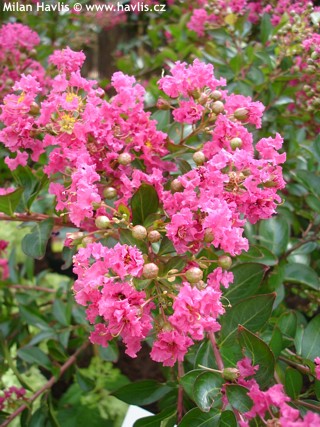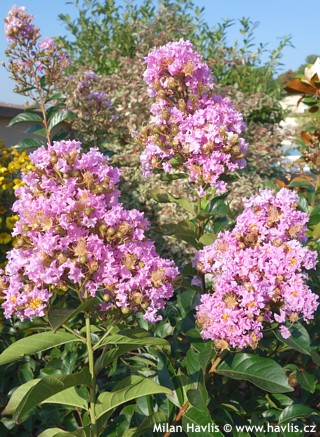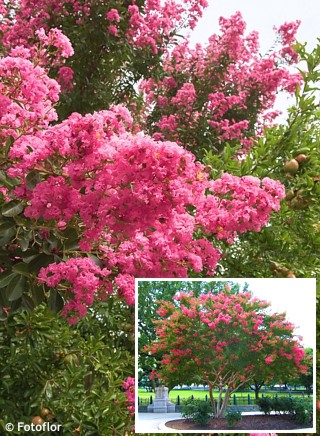Lagerstroemia 'HOPI' crepe myrtle
Lagerstroemia
Crepe myrtle is a flowering shrub or small tree from China. It was first introduced to the USA and the UK in the 18th century. The original plant lagerstroemia indica is too tender and not too pretty so breeders were working on further hybridization and the most attractive varieties available now are believed to be results of crossing with l.speciosa and l.fauriei. Far more important news for us is the fact that among those finished plants were selected others that survived lower temperatures than what was common in the areas of natural habitat so we have a few myrtles that can grow even in our climate. Some were selections, other further hybrids
Hopi is a crepe myrtle hybrid variety suitable for zone 6 and higher. It produces rich panicles of bright pink flowers earliest of all known hardy varieties so far introduced – it begins blooming in late July or early August. Deciduous leaves are 3-4 cm long, elliptic to obovate, very glossy, olive green in summer, turning red, purple, and orange in autumn.
Crepe myrtle needs little care. They need full sun with zero shade during the day. Pruning is important in colder zones and will secure flowering: cut back last year's growth to about a third of its original size. Do so in spring after danger of frosts. The plant will make strong news shoots that will bear flowers. Grow it in well-drained soil that should be kept moist before it gets fully established. If cultivated in acid soil the plant will make fabulous colour play of autumn foliage. Crepe myrtle needs heavy mulching in winter and some mulch in summer to retain moisture. Fertilize in spring to encourage growth (nitrogen-based fertilizers), and in summer to encourage flowering (phosphorus-based fertilizers). Hopi is top hardy to about -21°C and root hardy to about -25°C (USDA zone 6).
Last update: 16-08-2012

































